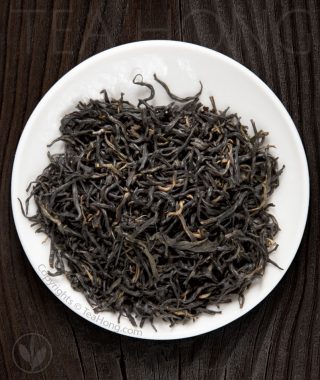Select a tea by category, region, taste or TCM character
At TeaHong.com, we try to put ourselves in our customers’ shoes. Different people have different priorities. Each sees the world differently. Naturally when it comes to selecting a tea, your criteria may not be the same as that of any other tea drinkers. That is why we group our tea products in different ways so you can see them in the context that is closest to how you think when selecting a tea.
Selection by Tea Category
The most common way to group different varieties of tea is by the category of processing method with which they are produced. Some call it Tea Classification, others Tea Categorisation. We think the later label is semantically more accurate.
Many connoisseurs and tea specialists organise their collections with this concept.
The above chart shows the five main categories: Green, Black, White, Pu’er ( Post-Fermentation ) and Oolong teas. Click the pie chart to browse the category of tea, click on your choice and enjoy the browse!
Need more info about a category before seeing the products? Here are some articles:
Selection by Taste
Teas are like raw gems. The true taste of each awaits the revelation made possible by the way you make it. Your personal need matters. It may change according to mood, time of the day, and occasions.
Experience and explore
Begin by tasting a few selections using various infusion styles to gain more specialist understanding of the finesses and differences. Relate this with your personal preferences and you will gradually carve out a direction in building your own repertoire of tea. This will be your very own line that best suits your taste and your needs. With repeated usage your senses and perceptions will deepen. This will empower you with the connoisseur skill to easily master yet more varieties to continue to gain levels in the vast world of tea.
Selection by TCM Characters
This is for those who understand the needs of answering the voice of the body. A well customised and balanced collection not only helps to maximise tea’s health benefits, but also tea’s gastronomic qualities. At Tea Hong, we categorise our collection by traditional Chinese medicinal character.
Information on a tea page
Detail information on each tea page includes a description, taste profile, infusion tips and a few properties described with icons. This article gives a general orientation in case you want to prepare yourself before browsing.
Customer Reviews
Yet another way to get an idea is to see how other customers see our products. Read a few random reviews they have posted in this site, and click on the link to go to the product page:
- Tea Hong
April Mist, traditional green tea
I appreciate the depth and clarity of this Yunwu, it is most certainly a mature & sophisticated representation of a popular cultivar. This one is pungent & complex, with some nuances that set it apart from other examples of Yunwu that I’ve tried in the past.
The dry leaf aroma is strong and clear, with subtle traces of dark chocolate, perhaps a testament to the wild nature of these tea bushes. As the steam from my hot mug warms up the leaves, I get some hints of malted grains that begin to waft up from the cup.
Regardless of how you brew it up, the soup is quite complex, with a full and round body that has well-developed notes of cucumber, squash, snow peas, and steamed spinach. There are some of the typical nutty undertones associated with Yunwu, and I also get some hints of cacao nibs. There are distinct overtones of fresh-cut florals, and a lingering sweetness that is pervasive from the initial sip through the aftertaste. This sweetness sits firmly in the back of the throat, creating a very soothing and pleasant sensation that lasts for a while.
This is a very clean and refreshing tea, all the way through. Upfront, it’s powerful and will definitely grab your attention, and on the back-end, it’s very gentle and soft in its nature. It even resists turning bitter in the cup as the soup cools, which makes for an interesting session if you want to take your time sipping on this tea slowly and appreciating the subtle changes as the temperature drops gradually.
NN
Song Cultivar, Phoenix dancong oolong
Perfume for the palate
Oh, the excitement when the Tea Hong box arrives! Song Cultivar was the first to be sampled after the un-boxing of my second shipment. The dry leaves make music as they tinkle into the gaiwan, blooming into a mass of plump foliage when brewed. The tea is clear and golden brown but tastes like a gray, misty day by a crackling fire. Deep and slightly bitter, it leaves a citrus-like perfume lingering on your palate.











































Dianhong Classic, traditional black tea
Indeed, the experience of taste can be a very subjective matter. As you have pointed out the infusion method matters. A different way will most definitely give you another experience. I am glad you have enjoyed the tea, every batch of which has taken me so much work to finalise.
Leo Kwan